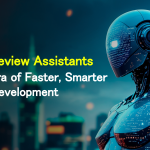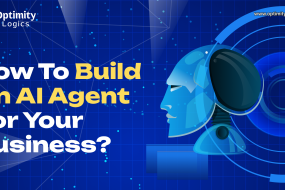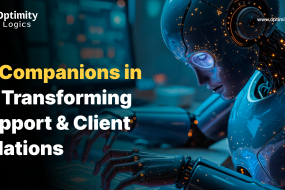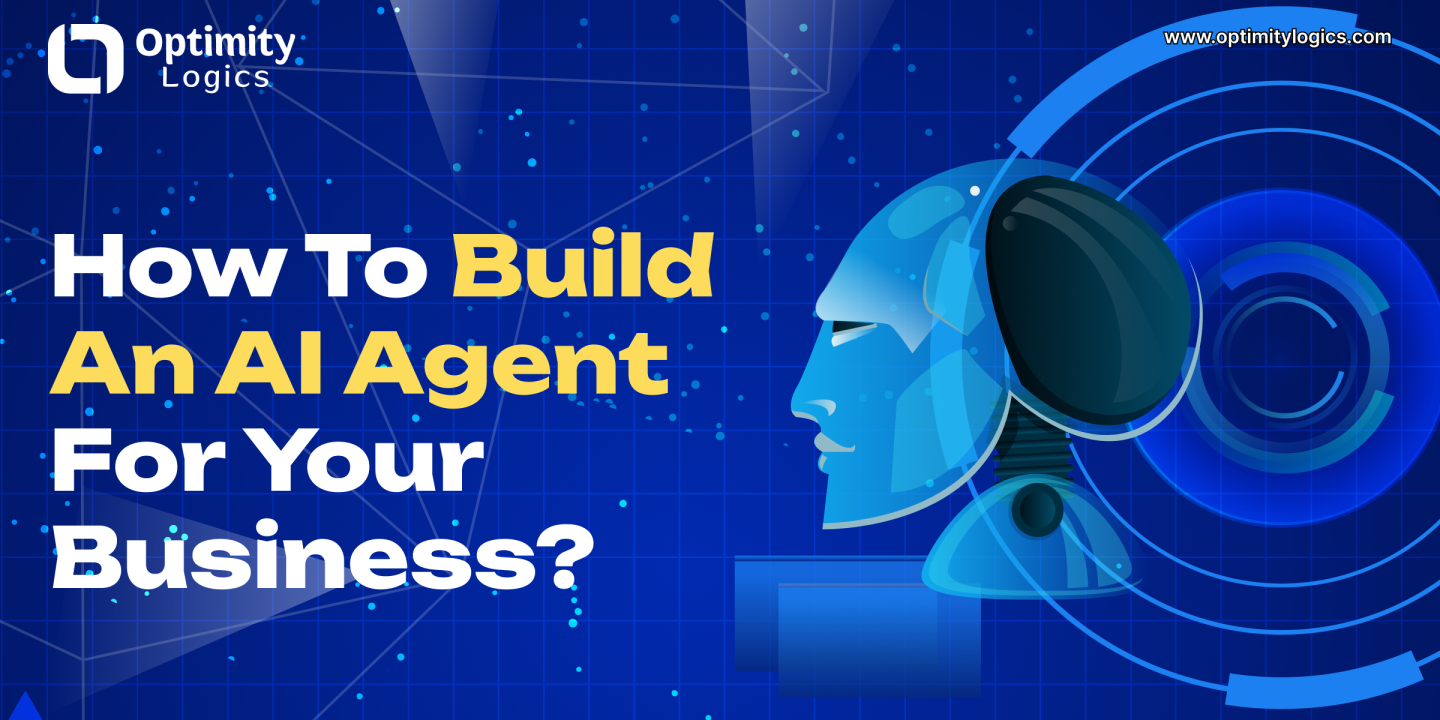
How to Build an AI Agent? AI agents are revolutionising the business landscape by automating tasks, enhancing customer interactions, and driving smarter decision-making.So, From streamlining operations to improving efficiency, implementing an AI-powered agent can give your business a significant competitive advantage.
Correspondingly, This guide will walk you through the key steps to develop and deploy a tailored AI agent, helping you optimise processes, boost productivity, and unlock new growth opportunities.
Afterward, AI agents streamline operations, enhance customer experiences, and drive measurable business growth. So, Building one involves setting clear objectives, assembling the right team, and leveraging AI frameworks or APIs within a structured development process.
Artificial intelligence (AI) agents are transforming business operations by enhancing customer engagement, streamlining workflows, and delivering measurable results. In today’s competitive market, AI agents play a crucial role in automating repetitive tasks, providing 24/7 customer support, and driving overall efficiency.
Optimity Logics also covers key challenges like data limitations and scalability, offering expert strategies for seamless deployment and continuous optimization. So, Explore what it takes to build an AI agent and unlock its full potential for your business.
What is an AI Agent?
An AI agent is an intelligent software program that leverages artificial intelligence to perceive its environment, analyze data, make decisions, and take action to achieve specific objectives. Utilizing technologies such as machine learning, natural language processing (NLP), and automation, AI agents efficiently perform tasks with minimal human intervention, enhancing productivity and decision-making.
– Automating email scheduling and delivery
– Responding to customer inquiries in real-time
– Predicting customer behaviour and preferences
– Analyzing data to identify trends and patterns
– Streamlining appointment scheduling and management
– Automating patient triage and prioritization
– Detecting and preventing financial fraud and data breaches
– Optimizing stock management and inventory control
10 Game-Changing AI Agent Use Cases for Business
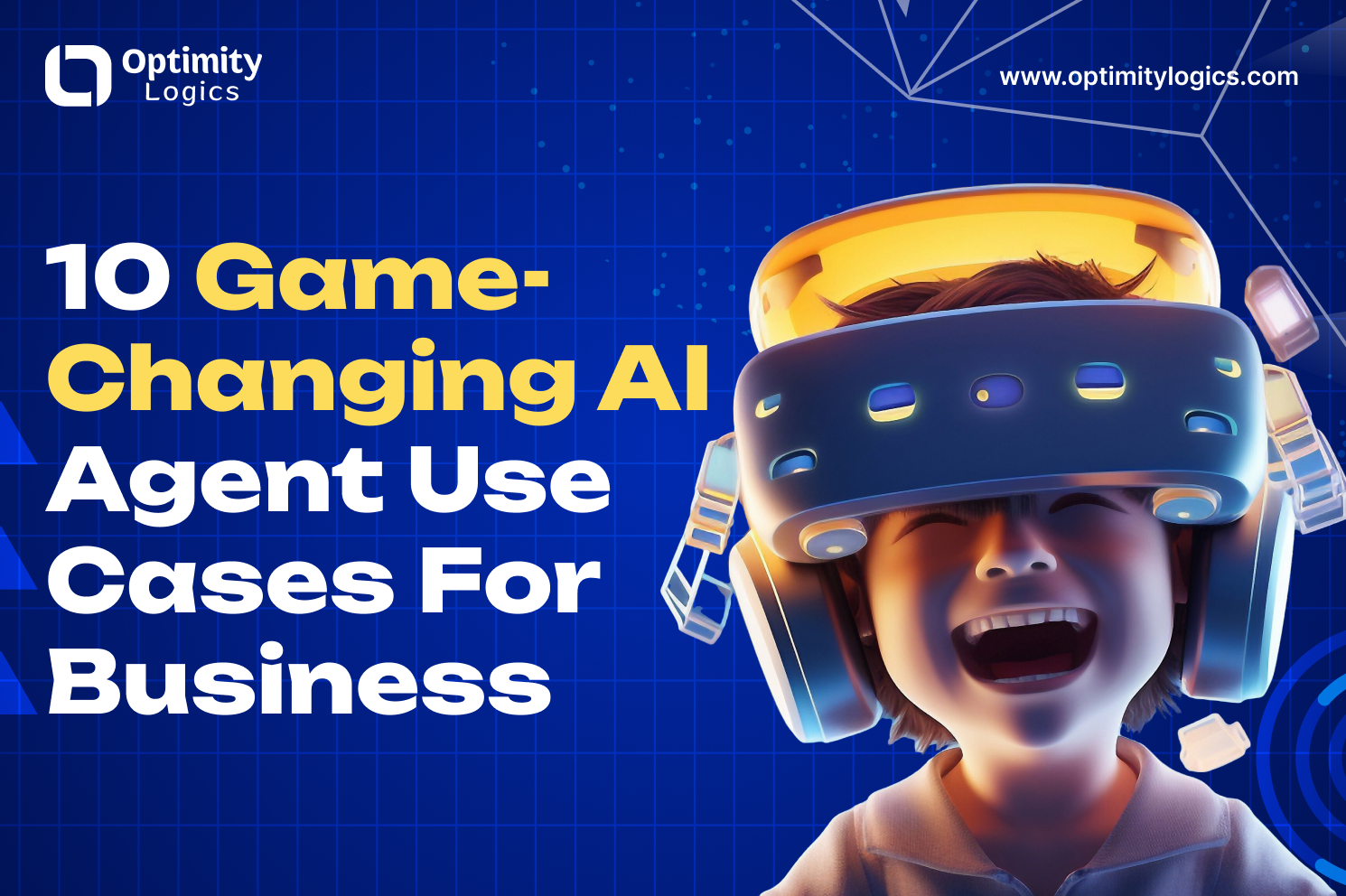
1. Automated Customer Support
Firstly, Automated customer support utilizes AI-powered chatbots, virtual assistants, and machine learning algorithms to deliver fast, efficient, and round-the-clock service. Also, Businesses leverage AI-driven solutions to enhance customer interactions, accelerate response times, and reduce operational costs.
Example: Chatbots & Virtual Assistants – Provide
2. Sales and Lead Generation
Secondly, AI-powered sales and lead generation solutions help businesses identify, engage, and convert potential customers more efficiently. Also, By leveraging machine learning, predictive analytics, and automation, AI agents streamline the sales process, optimize outreach, and improve conversion rates.
Example: Automated Email Campaigns email sequence, Sales Forecasting Tools
3. Marketing Automation
Moreover, AI-powered marketing automation enhances and streamlines marketing efforts by utilizing advanced algorithms and data analytics. As well as, By automating repetitive tasks and personalizing customer interactions, businesses can create more targeted, engaging, and efficient marketing campaigns.
Example: Social Media Scheduling
4. HR & Recruitment Assistance
AI-driven HR and recruitment solutions optimize the hiring process by automating tasks, enhancing candidate screening, and improving decision-making. Additionally, By leveraging machine learning, natural language processing (NLP), and predictive analytics, businesses can identify top talent more efficiently, minimize hiring bias, and enhance workforce management.
Example: Automated Interview Scheduling
5. Finance & Fraud Detection
AI-powered finance and fraud detection solutions help businesses streamline financial operations, detect anomalies, and prevent fraudulent activities in real time. Also, By leveraging machine learning, predictive analytics, and automation, organizations can enhance financial security, reduce risks, and improve decision-making.
Example: AI Fraud Detection Systems
6. Supply Chain & Inventory Management
Additionally, AI-powered supply chain and inventory management solutions enhance efficiency by predicting demand, automating logistics, and optimizing stock levels. So, By leveraging machine learning, predictive analytics, and real-time data, businesses can reduce costs, prevent shortages, and streamline operations.
Example: AI-Powered Demand Planning
7. AI-Powered Cybersecurity
AI-powered cybersecurity solutions enhance threat detection, risk mitigation, and real-time response to cyber threats. Also, By leveraging machine learning, behavioural analysis, and automation, businesses can proactively identify vulnerabilities, prevent attacks, and safeguard sensitive data.
Example: Fraud & Identity Theft Prevention
8. AI-Driven Personal Assistants
AI-driven personal assistants utilize machine learning, natural language processing (NLP), & automation to simplify daily tasks, enhance organization, and boost productivity. Meanwhile, These intelligent assistants efficiently manage scheduling, reminders, communication, and more, enabling users to focus on high-priority tasks.
Example: Google Assistant & Siri
9. Healthcare & Patient Management
As well as, AI-powered healthcare and patient management solutions enhance efficiency, accuracy, and patient outcomes by leveraging machine learning, predictive analytics, and automation. Also, From diagnosing diseases to optimizing hospital workflows, AI is revolutionizing the healthcare industry.
Example: Remote Patient Monitoring
10. Business Intelligence & Data Analytics
AI-powered business intelligence (BI) and data analytics solutions help organizations analyze vast amounts of data, uncover patterns, and make data-driven decisions with greater accuracy and speed. Also, By leveraging machine learning, predictive analytics, and automation, businesses can gain actionable insights to enhance performance and drive growth.
Example: Customer Segmentation & Targeting
A Step-by-Step Guide to Creating an AI Agent
Additionally, Building an AI agent requires a structured approach, combining data, machine learning, and seamless integration with business processes. Also, Below is a step-by-step guide to developing an AI-powered agent for your organization.
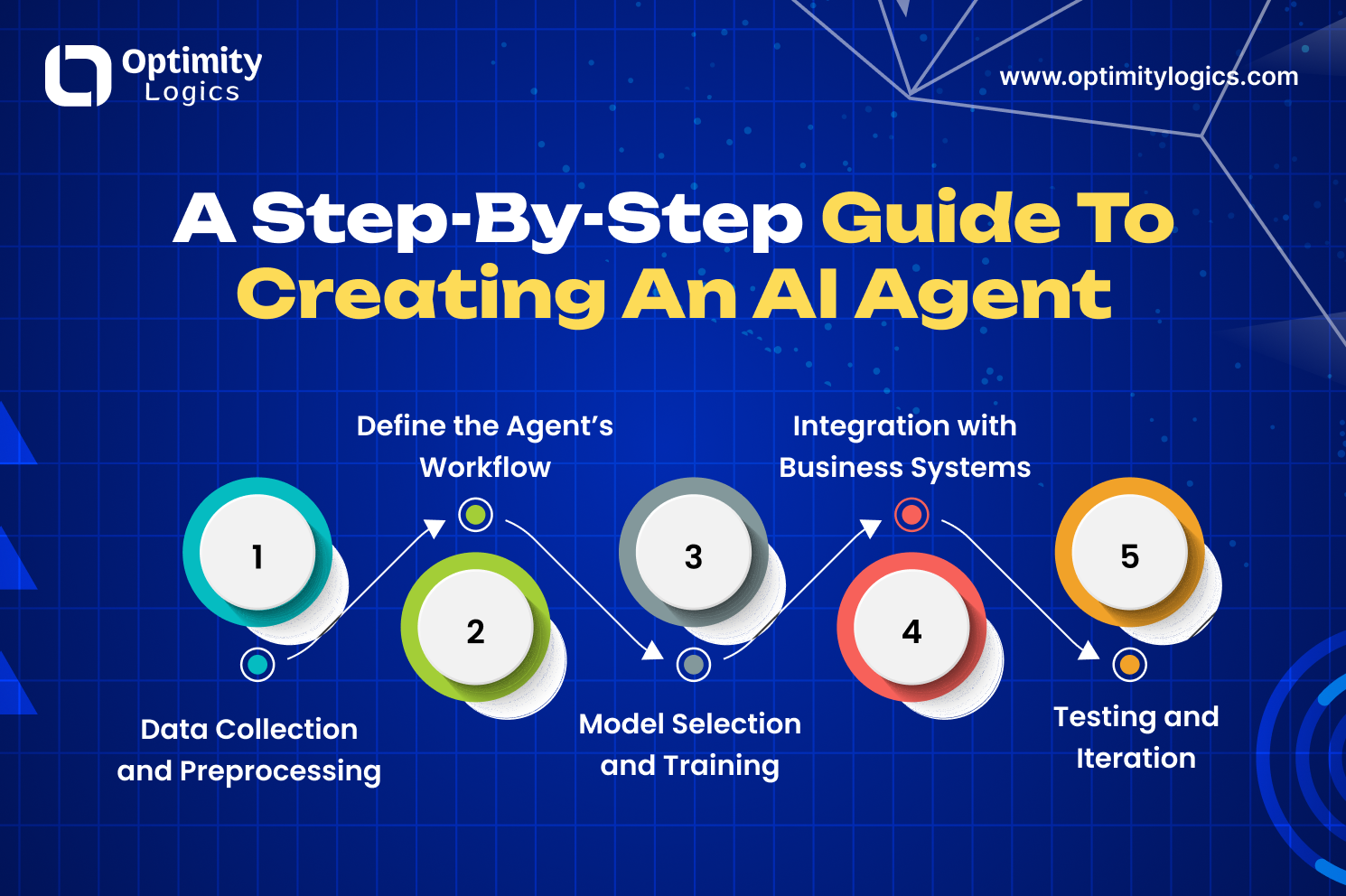
Step 1: Data Collection and Preprocessing
Also, The foundation of any AI agent is high-quality data. As well as, Proper data collection and preprocessing ensure that the AI model learns effectively and makes accurate decisions. So, This step involves gathering, cleaning, and structuring data for optimal performance.
>> Data Collection
>> Clean and Organize
>> Ensure Compliance
Step 2: Define the Agent’s Workflow
An Agent’s Workflow refers to the structured process an agent follows to complete tasks efficiently while ensuring compliance with organizational policies and regulatory standards. Also, Below is a general workflow that can be tailored to specific industries.
>> Identify Tasks
>> Determine Inputs and Outputs
>> Create Decision Flows
Step 3: Model Selection and Training
As well as, Model selection and training involve choosing the right algorithm, fine-tuning hyperparameters, & training a machine learning model to achieve optimal performance.
>> Select a Model
>> Train the Model
>> Validate Performance
Step 4: Integration with Business Systems
Also, Integrating a model or agent into business systems ensures seamless operations, automation, and compliance with organizational goals.
>> CRM Integration
>> ERP Systems
>> API Usage
Step 5: Testing and Iteration
Testing and iteration are critical for refining models, software, and business processes. So, This workflow ensures performance, accuracy, and compliance with business needs.
>> Simulated Testing
>> A/B Testing
>> Collect Feedback
>> Iterate
Conclusion
Artificial Intelligence agents are a valuable investment, streamlining repetitive tasks such as email automation, appointment scheduling, fraud detection, inquiry management, and more. While challenges like data limitations and scalability can arise, success lies in using the right tools, assembling a skilled team, and implementing proven strategies.
With AI rapidly reshaping industries, now is the ideal time to harness its potential and position your business for future growth. So, Ready to turn your AI vision into reality?
At last, Partner with Optimity Logics for expert guidance in building AI agents that drive measurable results and long-term value. So, Let’s shape the future of your business with intelligent solutions.
Don’t miss the follow our social sites LinkedIn, Instagram, and Medium.
